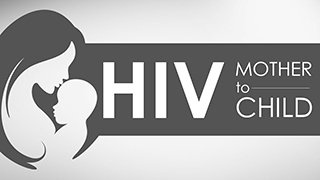Knowledge of Pregnant Mothers on the use of Prevention of Mother to Child Transmission of HIV Services in Kenya: A Cross Sectional Study at Bungoma County Referral Hospital

Abstract:
Background: Mother-to-child transmission (MTCT) of
the human immunodeficiency virus (HIV) remains the major source of HIV infection
in young children. Targeting pregnant women attending antenatal clinics provides
a unique opportunity for the implementing prevention of mother-to-child transmission
(PMTCT) programs against HIV infection of newborn babies.
Objective: To identify factors affecting
Knowledge of prevention of mother to child transmission of HIV services among pregnant
women attending antenatal clinic in Bungoma County Referral Hospital.
Methodology: A cross-sectional
study was conducted among pregnant mothers attending antenatal care clinic at Bungoma
County Referral Hospital. A systematic random sampling technique was used to select
50 respondents, using Fisher et al, 1999. The data was collected using structured
interviewer administered questionnaire prepared to address knowledge, and associated
factors on PMTCT services. Data was entered and analyzed using Statistical Package
for Social Sciences (SPSS) version 20.
Findings: A big number
(40%) of the mothers did not know about PMTCT services which were being offered
in the hospital. It was noted that the respondents who had little or no knowledge
of the services were mostly below 25 years of age and those with low education levels.
On the attitude towards PMTCT services it was found that (44%) reported that it
is good to take on PMTCT services if reactive and (56%) of respondents reported
that PMTCT services are wastage of time because AIDS has no cure.
Conclusion: The educational
level was the most important factor in understanding PMCTC services
Recommendation: To
improve and increase sensitization and awareness to the communities on what PMTCT
program entails.
Keywords:
Prevention of mother to child transmission, Human immunodeficiency virus, Acquired
immunodeficiency syndrome, Antenatal clinic.
References:
[1]. Agu, V. (2009). The Development of Harmonized minimum standards for guidance on HIV testing and counseling and prevention of mother to Child Transmission of HIV in the SADC region. PMTCT Country report. Namibia.
[2]. Babalola Stella and Adesegun Fatusi (2009) Determinants of use of maternal health services in Nigeria - looking beyond individual and household factors. BMC Pregnancy and Childbirth 9:43
[3]. Chasela S Charles, Hudgens G Michael, Jamieson J Denise, Kayira Dumbani, Hosseinipour C Mina, Kourtis P Athena, Martinson Francis, Tegha Gerald, Knight J Rodney, Ahmed I Yusuf, Kamwendo D Deborah, Hoffman F Irving, Ellington R Sascha, Kacheche Zebrone, Soko Alice, Wiener B Jeffrey, Fiscus A Susan A, Kazembe Peter, Mofolo A Innocent, Chigwenembe Maggie, Sichali S Dorothy, van der Horst M Charles.(2010). Maternal or Infant Antiretroviral Drugs to Reduce HIV Transmission. N Engl J Med, 362 (24):2271-81.
[4]. Esther Ndonga, Zipporah Ng’ang’a, Erastus Muniu, Mohamed Karama and Martin Matu (2014) Barriers to Uptake and Effective Integration of PMTCT into SRH Services in Selected Health Facilities in Nairobi County, Kenya. Journal of Pediatrics & Neonatal Care. Volume 1(4).
[5]. Fisher AA, Laing JE, Strocker J E (1998) Handbook for family planning, operation research design in sampling. Population Council. 40-45
[6]. George Awungafac, Patrick Achiangia Njukeng, Juliana Ajoache Ndasi, and Lawrence Tanyi Mbuagbaw (2015) Prevention of mother-to-child transmission of the Human Immunodeficiency Virus: investigating the uptake and utilization of maternal and child health services in Tiko health district, Cameroon. Pan Afr Med J. 2015; 20: 20
[7]. Gundel H, Katja S, Ilaria M, Chris B and Paulina M. (2005) Analyzing awareness and Handbook for family planning, operation research design in sampling. Population Immunodeficiency virus; a study on acceptability by Nigerian women attending clinics. African Journal of Reproductive Health.
[8]. Health Bridge. (2007). Challenges in the prevention of Mother to child transmission of HIV in Africa.
[9]. Katushabe J. (2006).Knowledge and attitude of pregnant women on the use of prevention of mother to child transmission of HIV (PMTCT) services in Mbale regional hospital.
[10]. Moth I A, Ayayo ABCO, Kaseje DO (2000).Assessment of utilization of PMTCT services at Nyanza Provincial Hospital, Kenya. Sahara J. PubMed. 2005;2:244-50. mother-to-child HIV transmission in resource-poor countries: Translating research into policy and practice. JAMA. PubMed, 283:1175-1182.
[11]. National AIDS and STI Control Programme (2009) Sentinel Surveillance of HIV in Antenatal Clinics 2008/2009. Minstry of Health, Nairobi, Kenya
[12]. NASCOP, “Kenya National Guidelines for HIV Prevention and Management of People Who Use Drugs (PWUD)”, Kenya. 2013.
[13]. Perez, F., Mukotekwa, T, & Miller, A.(2004). “Implementing a rural programme of prevention of mother-to-child transmission of HIV in Zimbabwe: first 18 months of experience.” Tropical Medicine and International Health, vol. 9, no. 7, pp. 774–783.
[14]. Secka, E. (2010). Men’s involvement in care and support during pregnancy and childbirth: A qualitative study conducted in Gambia.
[15]. Semrau K, Kuhn L, Vwalika C, Kasonde P, Sinkala M, Kankasa C, Shutes E, Aldrovandi G, Thea DM (2005) Women in couples antenatal HIV counseling and testing are not more likely to report adverse social events. AIDS. 19(6): 603-9.
[16]. Sirengo M, Muthoni L, Kellogg TA, Kim AA, Katana A (2014) Mother-to-child transmission of HIV in Kenya: results from a nationally representative study. J Acquir Immune Defic Syndr 66 Suppl 1S66–74.
[17]. UNAIDS 2010. Global Report. UNAIDS report on the global AIDS epidemic/2010. Geneva, Switzerland: Joint United Nations Programme on HIV/AIDS (UNAIDS); 2010.
[18]. UNAIDS (2013) UNAIDS report on the global AIDS epidemic 2013. Geneva
[19]. UNAIDS AIDS (2001) Declaration of Commitment on HIV/AIDS. United General assembly. Geneva.
[20]. UNICEF (2012) Tracking Porgress on child and maternal nutrition. Assessed from www.unicef.org/publications/files/Tracking_Progress_on_Child_and_Maternal_Nutrition_EN_110309.pdf, on 23rd February, 2015
[21]. USAID; (2001): Effective programs for preventing mother-To-Child HIV transmission. Washington DC. The population Council: Washington, DC USA
[22]. WHO (2013) Reproductive Health and Research. Assessed from
http://www.who.int/malaria/publications/atoz/iptp-sp-updated-policy-brief-24jan2014.pdf, on 23rd February, 2017.
[23]. Zolfo, M., Delvaux, T. & Tamburrini, E. (2005). HIV/AIDS Knowledge and PMTCT Demand in Rural Zimbabwe. Washington: BMJ Publishing group

